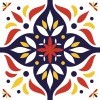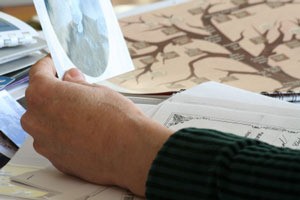Putting the Leaves on Your Family Tree - Part Four
You should have a great start on your genealogy by now. Here are a few tips on things you may need in your adventures in finding your family tree.
Many of you may have been spending a lot of time on the internet researching. Some of you may have taken the next step already and have been going to your local genealogy library or history center. More of you may have decided to really get into it and have been finding lost documents and photographing old family homesteads. Well, good for you.
Some of the other things that you can do to add to your family history are to copy maps from the time frame that you are researching and add them to your book. Did your family travel the Oregon Trail? Add a map. Maps can be found online or in your local library. You can also research what it was like living in your county at the time your relatives first lived there. What about a short history of your hometown. These are things that future generations might just love to read about. Do you know where your grandparents are buried? Why not make a trip to the cemetery and take a picture of their tombstone.
Remember to bring some fresh flowers. For older tombstones, you can do a rubbing. You will need a large piece of paper and some tape to hold it on the tombstone and a crayon. Tape the paper to the tombstone and gently rub the crayon. It is just like when we were in school and did this with leaves, the markings from the tombstones will be there on your paper. Many tombstones had inscriptions, not just the names and dates. These would be beautiful to add to your book.
Finding documents for your family history can lead you to many fun places. Have a member of the family that was an inventor? Try finding the patents to his inventions. The United States Patent office has a database that you can search by name or invention or dates. Have an artist in the family? Take some pictures of their works of art. While you are at it, ask him/her to make a drawing for the cover of your three ring binder and make sure he/she signs it. Make a list of an author's works and if they are still alive, get them to sign a copy for you. Collect the works of unpublished writers or the music of musicians. They will become family heirlooms. Got great cooks in your family? Take a picture of the cook in the kitchen making her/his favorite dish and write down the recipe.
Quilter or Crocheter? Get their favorite pattern and a picture of them with their project. If you have a lot of them, get each to make a square and put it together for a family quilt or afghan. Got an athlete in the family? Research their records at the morgue of your local newspaper. If you have traced your history far enough back, you might be able to find historic homes that your ancestors lived in and get pictures of these too. To do these things, you will be spending a lot of time in your local library and out and about. Here is a list that I am sure you will find very helpful in your travels.
Genealogist Tool Kit
When visiting archives, libraries, and town halls
Equipment
- Band-Aids - a few for paper cuts or other minor injuries
- Calculator (small) - to total up costs, distances, ages, etc.
- Camera and film - in libraries, archives, and town halls, ask permission to take photos
- Computer (portable) - not a necessity, but wonderful for those who own or can borrow one. Be sure to take external power adapter, spare batteries, and extension cord. Remember that foreign countries (Mexico, Canada) may have different voltages than in the U.S. If you go to Europe, you will need to buy a special adapter or you will not be able to use the computer.
- Envelopes (business size) - in case you need to write a letter or leave a note for someone
- Eraser (art gum)
- File folders (empty) - for information found on each surname
- Flashlight - in case the records are under the stairs or up in the attic!
- Glue stick
- Kleenex - bring a small hand-size pack
- Magnifying glass
- Medications - If you are on medication, be sure to take some along. There is nothing worse than getting sick in a strange place.
- Money - with a carrier, "fanny pack" or small change purse. Don't forget money for lunch! Time stands still for the engrossed researcher, but the brain still needs food to sustain the substantial amounts of energy required by intensive research. Money, for parking meters and copy machines, assorted change(dimes and quarters), one-dollar bills. Some people prefer to keep quarters in empty 35mm plastic film canisters. If extensive copying is anticipated, get rolls of dimes or quarters from the bank before you go to the library or archives.
- Notebook - loose-leaf Notepads, small post-it notes, loose-leaf typing and lined paper
- Paper clips - a small bunch kept in a small zip-lock plastic bag
- Paper punch - 1-hole or 3-hole (some are designed to fit into loose-leaf notebooks)
- Pencil sharpener - small, hand-held
- Pencils(regular #2) - with erasers in several colors
- Pens - in several colors, some archives may not allow pens
- Protractor - useful in plotting property descriptions from old deeds
- Ruler - 6" or 12", depending on your preference, some people may prefer a miniature tape measure
- Scissors (small) -handy for trimming photocopies
- Stamps - to mail any letters/notes that might need to be written on the spot
- Stapler - miniature staplers are available
- Staple-puller - "tiger jaws"
- Tape (frosted)
- Tape recorder - small portable to read and record sections of books, you can record entries too long to type or that cannot be copied
- Yellow transparency sheet - helps when reading faint writing on microfilm reader screens
Informational Needs
- Pedigree charts - for the families you are researching: COPIES (originals stay at home), blank charts for new information
- Family Group Sheets - for the families you are researching: COPIES (originals stay at home), blank charts for new information
- Census forms - blank preprinted (available for 1790-1920)
- ID, photo ID
- Library and Archives Information - location hours, and days open special staff or departments to see
- Charts of Dewey Decimal/Library of Congress subject classifications - so you can readily locate your subject
- Maps - town, county, state, or regional as needed
- Research log
- Soundex codes - for surnames you are checking in the census
- Surname list
- Alphabetical list - of all names you are searching in the area
When Visiting Cemeteries
Many of the items above will also be useful in cemeteries, with the following additions:
- Camera and film
- Clothing - proper hat to shade from sun sturdy shoes socks and long pants, with long-sleeved shirt (protection against sun and ticks)
- First Aid kit - include an allergy kit, if you are allergic to bee stings, etc. depending on the area, you may want to include a snakebite kit
- Gloves (gardening) - in case you have to clear a gravestone by pulling grass
- Insect repellant
- Mirror - to shine light at headstones, to make inscriptions more legible
- Plastic garbage bags - to kneel on if you have to pull grass from around a headstone
- Rice papers and crayons - to make rubbings of inscriptions. Be sure to get permission from the person or organization responsible for the cemetery prior to undertaking rubbings.
- Shovel - small, portable auto shovel, in case your car gets stuck
- Sunscreen
- Sunglasses
- Trowel - for clearing away grass around cemetery markers
- Umbrella - in case of rain or to shade from sun

